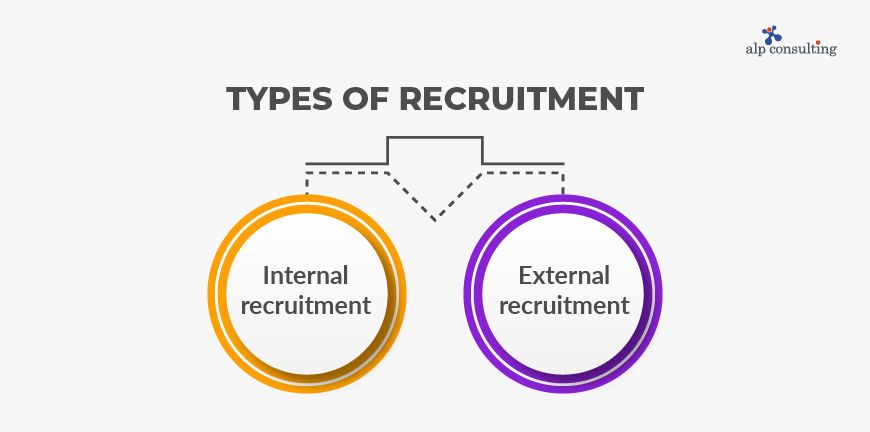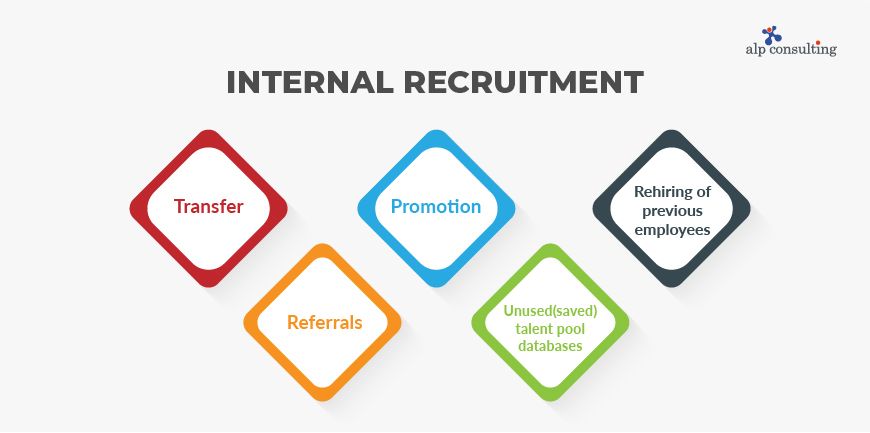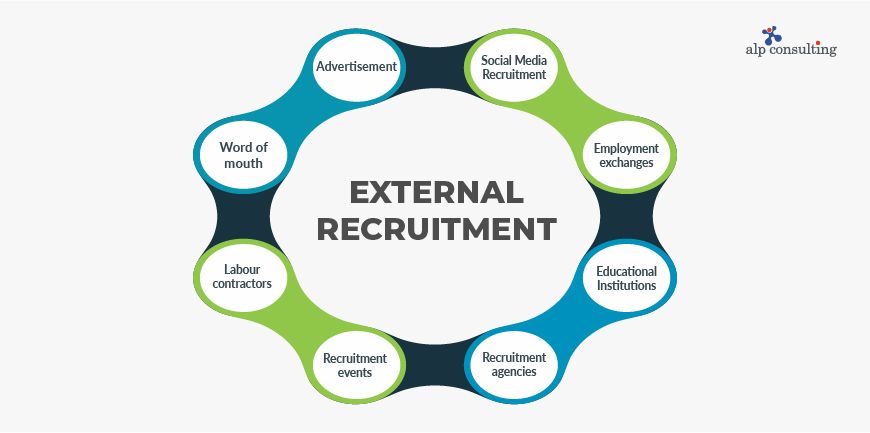
How Patient Support Programs Can Help Clinical Research?
21/06/2024
Updated Statutory Compliance Checklist [Updated 2025]
25/06/2024Recruitment is crucial for all organizations, whether they are startups, mid-sized or huge corporates. Based on distinct job requirements, recruiters in an organization can engage in diverse types of recruitment. Employers can use hiring tactics that match their environment and attract the candidates they seek.
For example, suppose you are in the manufacturing business. In that case, you will have departments concerning design, technical, marketing, sales, and others where you’ll need to fill roles from entry to executive level. Using several types of recruitment is the ideal way to go to find the right candidates to fill these roles.
So, what are the diverse types of recruitment you can go for? Based on your recruitment needs, there are essentially two types of recruitment, Internal Recruitment and External Recruitment. To know which type of recruitment would best serve your business needs, you must understand the different internal recruitment types as well as types of external recruitment.
Types of Recruitment
As we have established, recruitment can be divided into two types:

- Internal recruitment
- External Recruitment
What is Internal Recruitment?
Internal Recruitment is the process of hiring people from inside the organization. This type of recruitment could save a ton of time for recruiters as they don’t have to go through the long hiring process that includes sourcing, assessment, interviews, etc as the talent they need is sourced from within the organization. To give you a clearer idea of the same, you must explore the different internal recruitment types.

1. Transfer
A transfer most often works in organizations that have multiple outlets in different locations. For example, your store or unit in Delhi needs a store manager immediately, and you have an employee working in the same position in your Chennai location but is willing to be transferred and relocate to Delhi with the same designation and same pay.
2. Promotion
Suppose there is an opening for a team lead in your organization and there is a senior developer who is not just talented but is eligible for a promotion and has what it takes to lead a team. In such instances, through internal job postings, the senior developer is promoted to team lead and is also given the raise they deserve.
3. Rehiring of previous employees
Sometimes companies rehire a past employee for a new role if they have the skills to take up the new role or have upskilled from the last time that they left the organization or had been a great value-add to the organization in the past.
4. Referrals
Many organizations have gained their best employees through an internal reference by other employees who are currently working in the organization. And it makes sense, a current employee already has an idea about the role, company culture, etc, so they would have an idea about who would fit the role better.
5. Unused(saved) talent pool databases
A job posting, old or new, would have attracted tons of job applications, out of which only a select few would have been selected and hired for the job at the time. In times of need, these leftover job applications are a major source of applications to scour through to find one that’s best for a role that you are currently looking to fill in your organization.
What is External Recruitment?
External Recruitment is a process of attracting fresh candidates and recruiting from outside of the organization. Naturally, the external recruitment approach can bring in candidates with fresh, innovative ideas, and renewed energy and could pleasantly surprise you with their unique, hidden skills. While it is a time-consuming process, it could be a wonderful way to build a talent pipeline to secure the future of the organization. In this type of recruitment, candidates are sourced, vetted, assessed, and interviewed before a hiring decision can be made.

Some of the major external recruitment types that a recruiter can take advantage of are:

1. Advertisement
This is one of the most commonly used, yet one of the most effective types of recruitment strategies. Advertising is simply putting up job postings on various platforms such as LinkedIn, your company’s career site, and other social media platforms with the potential to attract candidates. Of course, this could be a costly recruitment method, but it also attracts a large pool of candidates and promotes the employer brand.
2. Social Media Recruitment
While it wasn’t seen as the most reliable type of recruitment method in the past, a recent survey by The Muse revealed that candidates do prefer looking for potential jobs on social media platforms like Facebook, Twitter, etc. Employers can take advantage of this and focus on advertising their jobs as well as company culture on social media attracting target candidates.
3. Employment exchanges
A term that has come from ages, employment exchanges are mostly run by the Government. Many candidates register themselves under these employment exchanges and are then sponsored by employers for recruitment to open job roles or advertised. Employment exchanges are run by private individuals and are equipped to supply the required manpower.
4. Educational Institutions
Educational institutions are a major source to attract potential candidates as students fresh out of college, have a zeal to prove their mettle, and want nothing more than an excellent job in hand, as they graduate. This type of recruitment is popularly called Campus Recruitment, wherein employers interview students and hire the best ones for their open roles.
5. Recruitment agencies
Yet another popular and reliable type of recruitment, engaging with an expert third-party Recruitment services provider such as Alp Consulting does not only help you recruit the best candidates for the job but also provide you with full-scale HR (Human Resources) services and recruitment services as per your need.
6. Recruitment events
For large organizations or companies planning expansion, recruitment events are ideal for attracting the right talent. These events can vary from hosting open days and attending job fairs to holding hackathons and conducting graduate recruitment drives on campus. For instance, Lego hosts “Brick Factor,” a competition where 100 participants compete in building challenges, with top performers offered jobs as Master Builders.
7. Labour contractors
This type of recruitment is solely for Manufacturing industries looking to hire manpower or factory workers. Through labor contractors, workers are appointed on a contract basis for a particular period.
8. Word of mouth
Large brands and well-known companies can leverage word-of-mouth recruitment because unsolicited job seekers approach them daily. With an established employer brand recognized as an employer of choice, they only need to announce that they’re hiring to attract a strong response.
Which is right for you? Internal Recruitment or External Recruitment?
Every company has unique requirements and needs. To understand which type of recruitment suits you best you must understand the difference between the two.
Difference between Internal Recruitment and External Recruitment
| Aspect | Internal Recruitment | External Recruitment |
| Candidate Source | Employees already working within the organization. | Potential candidates sourced from outside the organization. |
| Recruitment speed | Faster as there is no need to go through the full hiring process | Slower as it involves every step of the hiring process right from sourcing. |
| Cost | Cost-effective, as there are no external costs involved | Costlier due to advertising and screening expenses |
| Compatibility with company culture | More compatible as they are current employees already familiar with the culture. | Less compatible as they are new to the environment. |
| Diversity limitations | Limited diversity as it draws from the existing workforce | Can bring in diverse perspectives and experiences |
| Scope of new perspectives and skills. | Lesser as they must draw from the experiences of current employees | Can access a broader range of skills and experiences |
| Competition for Roles | Employees may compete for promotions or transfers | External candidates compete for advertised positions |
| Training Requirements | May require less training as employees are already familiar with the processes | May require more onboarding and training for new hires |
Conclusion
Both internal and external recruitment strategies have their benefits and drawbacks. The choice between them depends on the specific needs of the organization, the nature of the job vacancy, and the overall recruitment strategy. Often, a combination of both methods is used to optimize the recruitment process.
Contact Us For Business Enquiry

Amit Saproo
Amit Saproo is the Head of Operations at ALP Consulting with nearly 17 years of experience in Executive Search, RPO, Leadership, and IT & Engineering recruitment. He leads nationwide recruitment programs across Technology, BFSI, and R&D domains, driving strategic hiring solutions for diverse client needs. Amit excels in building and managing high-performance teams that deliver scalable, end-to-end recruitment and consulting services.




